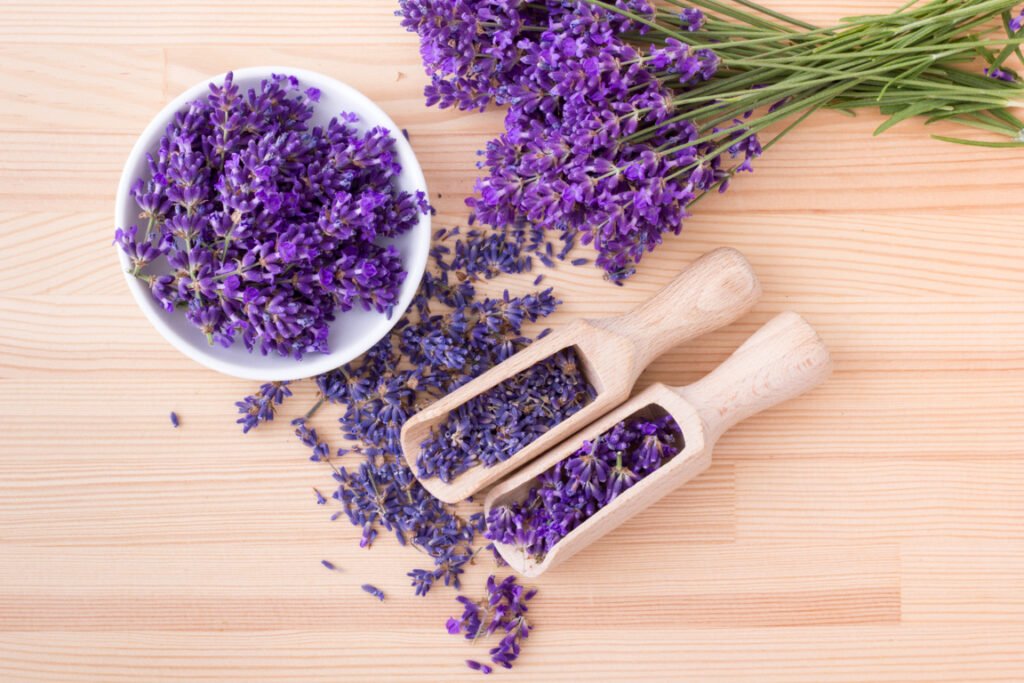
Sunflowers have a magical way of brightening our days with their cheerful disposition and captivating charm. As they sway in the summer breeze, you may wonder “How long do sunflowers bloom?” Well, let’s embark together on a delightful exploration of these golden wonders to uncover the secrets behind their mesmerizing and luminous performances.
Sunflower Basics

Sunflowers (Helianthus annuus) are radiant members of the Asteraceae family, delighting garden enthusiasts all over the globe. These botanical wonders boast large, vivid-yellow petals encircling deep, chocolate-brown centers, creating an appealing display of contrasting hues. Towering above most plants, sunflowers can reach staggering heights of 12 feet (about 3.5 meters) their heads standing proudly as they track their nurturing light source. Revered for their beauty and versatility, these solar sentinels are more than attractive eye-candies – their seeds provide sustenance for wildlife and humans alike, while their oil serves as a nutritious culinary staple.
Sunflower Blooming Season
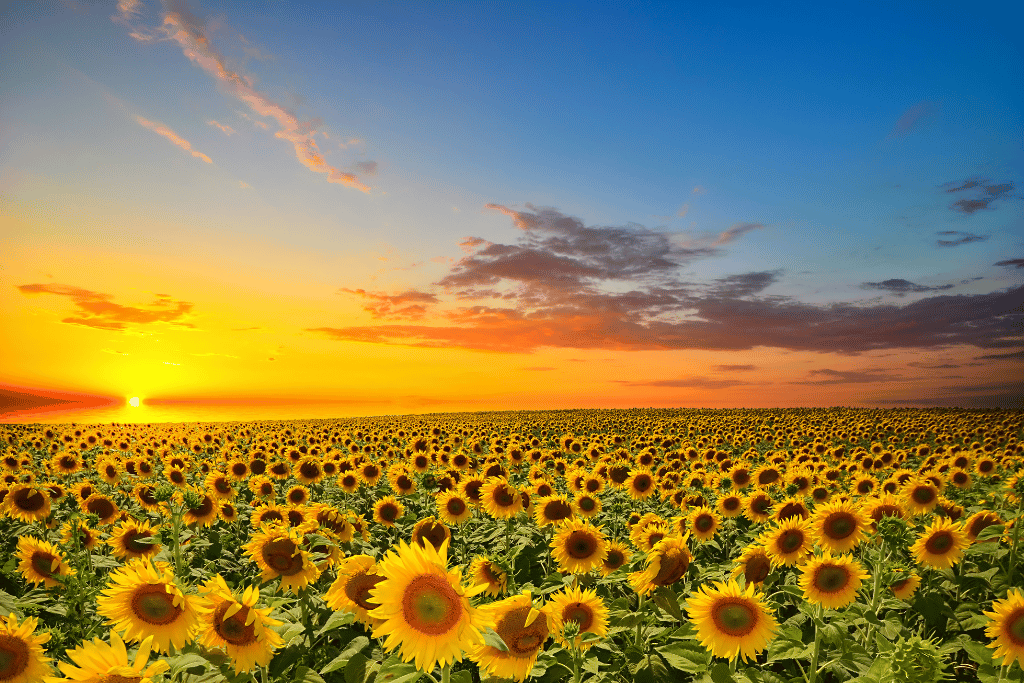
These beauties generally kick off their vibrant looks in the warmth of summer, usually between June and August. The sunflower’s stunning act lasts around two to three months, treating you to an extended show of color and charm.
But how long do sunflowers stay in bloom? To answer this question, it’s essential to understand when they start their blooming process in the first place. Each sunflower variety has its unique schedule for that, so you can stagger your planting to enjoy their splendor throughout the whole season. For instance:
- Dwarf Sunflowers (e.g., ‘Teddy Bear’, ‘Sunny Smile’): Expect blooms to appear about 45-55 days after planting.
- Mid-Season Sunflowers (e.g., ‘Autumn Beauty’, ‘Velvet Queen’): These stunners burst into bloom around 60-75 days after planting.
- Giant Sunflowers (e.g., ‘Russian Giant’, ‘American Giant’): This variety typically starts blooming in 70-100 days once planted.
And here’s a fun fact: sunflowers exhibit heliotropism, meaning they follow the sun’s path across the sky, ensuring they catch every ray of sunlight. It’s no wonder they’re such an exquisite addition to any garden!
When To Plant Sunflowers

Timing is key when it comes to planting these radiant gems. To achieve optimal results, plant sunflower seeds when the soil has warmed to at least 50-60°F (10-15°C) – usually around late spring or early summer. This ensures that your precious protagonists avoid any lingering frosts and cold snaps, setting the stage for a successful growing season.
Take advantage of the diverse range of sunflower varieties by planting at different time intervals, and you’ll have a garden teeming with cheerful colors all summer long. Remember, the sunflower is an ambitious grower, eager to tower above its neighbors, so don’t hesitate to give it a head start in its journey towards the sun.
How Long Do Sunflowers Bloom Before They Die?
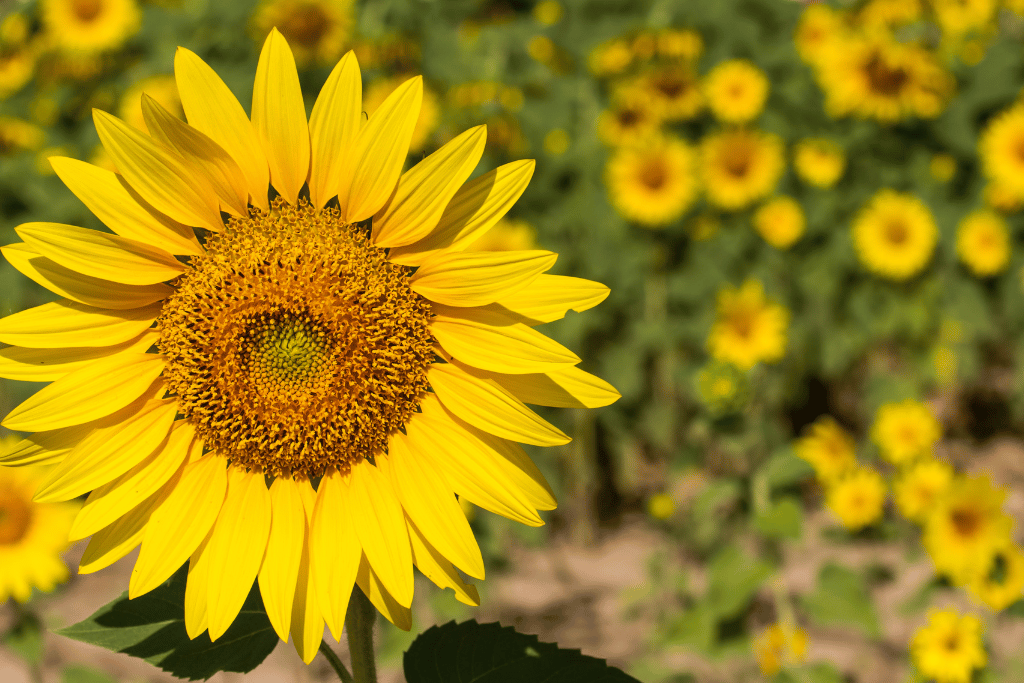
Once these beauties reach full bloom, the length of time they remain in their prime before beginning to wilt depends on factors such as the specific variety and environmental conditions.
In general, individual sunflower blooms last anywhere from 30 to 45 days. During this period, the flower head goes through pollination and seed development, which contributes to its longevity. However, keep in mind that certain varieties may have shorter or longer blooming periods. For instance, dwarf sunflowers might have a slightly shorter bloom duration compared to their giant counterparts.
The overall health and vigor of the plant can also influence how long sunflowers bloom. Adequate water, nutrients, and sunlight play a crucial role in helping sunflowers maintain their stunning appearance for as long as possible. Furthermore, environmental conditions such as extreme temperatures, heavy rainfall, or strong winds can affect this spectacular period.
How To Make Sunflower Blooming Period Longer

Extending the blooming period of your beloved Helianthus annuus is indeed an art worth mastering. However, with a few handy tricks up your sleeve, you can easily address the question of “How long do sunflowers bloom?” and appreciate the brilliant scenery provided by these sun-seeking treasures. Let’s delve into some key elements to help you achieve prolonged sunflower grandeur:
- Sun Exposure: Just like palm trees, these solar-powered superstars love basking in loads of direct sunlight – ideally, at least 6-8 hours of full sun per day. By ensuring ample exposure, you’ll help them maintain their dazzling blooms for an extended period.
- Watering: Striking the right balance is essential. Sunflowers need consistent moisture, especially during the early stages of growth and flower development. Water deeply at the base, avoiding the foliage, and allow the soil to dry slightly between waterings. This approach encourages robust root systems and supports enduring blooms.
- Temperature: Sunflowers are summer-loving plants, thriving in temperatures ranging from 70-78°F (21-25°C). While they can tolerate minor fluctuations, extreme heat or cold may shorten their blooming period. Be attentive to weather changes and consider providing shade or frost protection if necessary.
- Humidity: These floral wonders prefer moderate water content in the air. In regions with excessive humidity, stay on the lookout for signs of fungal diseases or pests, which can potentially curtail the blooming period.
- Fertilization: A well-balanced, slow-release fertilizer applied during planting is beneficial. However, refrain from over-fertilizing, as excessive nitrogen can lead to lush foliage at the expense of blooms. For an added boost, consider using a phosphorus-rich fertilizer to promote brilliant, long-lasting flowers.
By expertly navigating these factors, you’ll not only extend the blooming period of your sunflowers but also achieve a garden show that will leave onlookers green with envy!
Sunflower Blooming Length Is Affected By Pests and Diseases
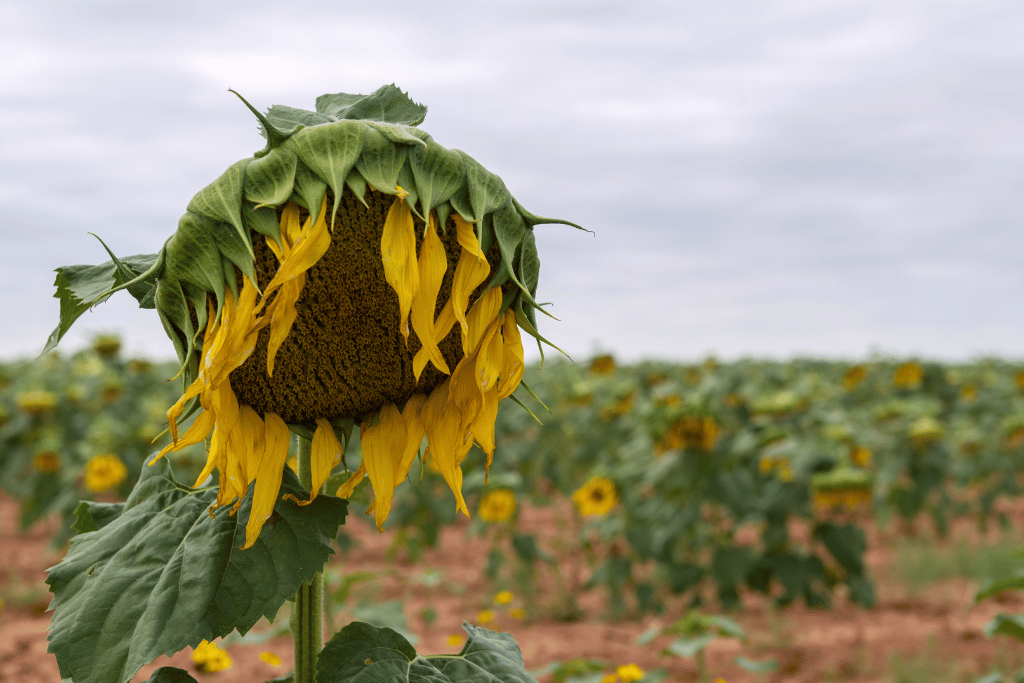
While sunflowers are extraordinary residents brightening up your garden, they can also face threats posed by uninvited guests. Understanding the most common pests and diseases affecting your greens helps you safeguard their health and make them bloom for longer.
Pests
- Aphids: Tiny insects that feast on the sap of the plant, draining the life away from it, and leaving deformed or stunted growth behind. Using a garden hose or insecticidal soap may work wonders at evicting these unwelcome tenants.
- Sunflower beetles: Vicious leaf-eaters, sunflower beetles can leave your plants ragged and stressed. Hand-pick them off or use an insecticide labeled for this specific critter.
- Cutworms: Nocturnal caterpillars that damage the base of your sunflower stems, causing the plants to topple over. Protect your flora with collars or consider using a targeted insecticide.
Diseases
- Sclerotinia: Also known as white mold, this fungal disease may lead to wilting, stem rot, and even plant death. Proper spacing, crop rotation, and fungicides significantly contribute to combating this foe.
- Downy Mildew: Caused by a fungus-like organism, downy mildew appears as yellow patches on leaves, which eventually decreases the plant’s health. Timely application of fungicides and proper air circulation can help keep this issue at bay.
- Rust: Another fungal infection that manifests as reddish-brown pustules on leaves and stems, impacting the green’s ability to photosynthesize. Remove affected plant parts and apply fungicides to prevent the spread.
Natural Factors That Make Sunflowers Die
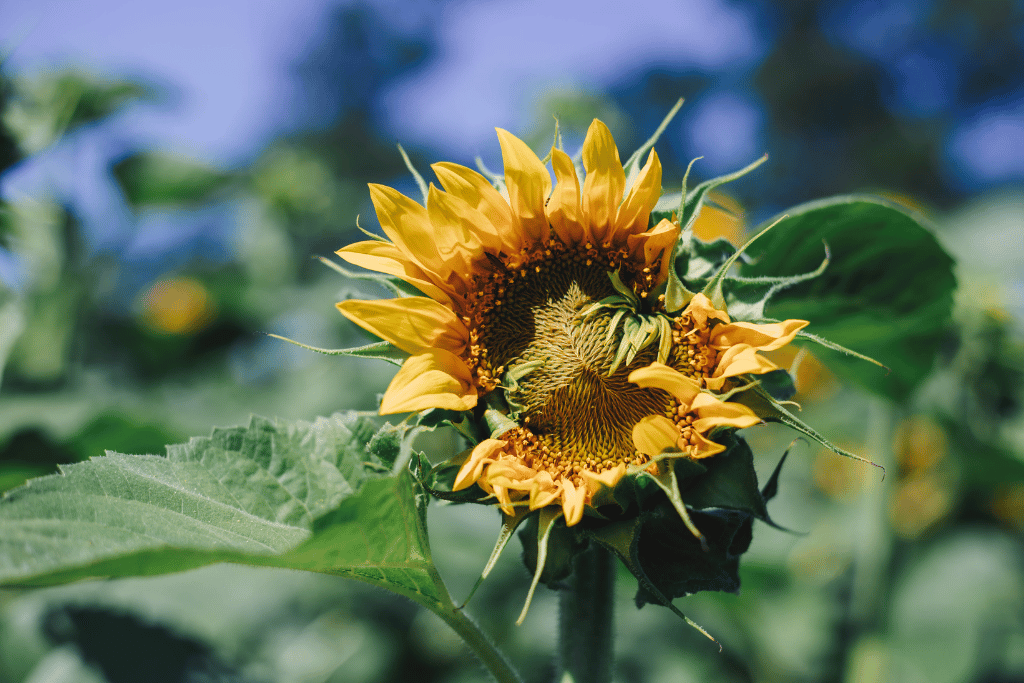
The life cycle of a sunflower encompasses growth from seeds, flowering, seed production, and ultimately, death upon completion of the cycle.
As annual plants, they possess shallow, fibrous roots, limiting their ability to retain water compared to other plant species. Consequently, they become more vulnerable to adverse conditions such as drought and high temperatures. In instances of extreme heat or dryness, sunflowers may exhibit wilting and ultimately succumb to these environmental stressors.
Signs Of A Dying Sunflower
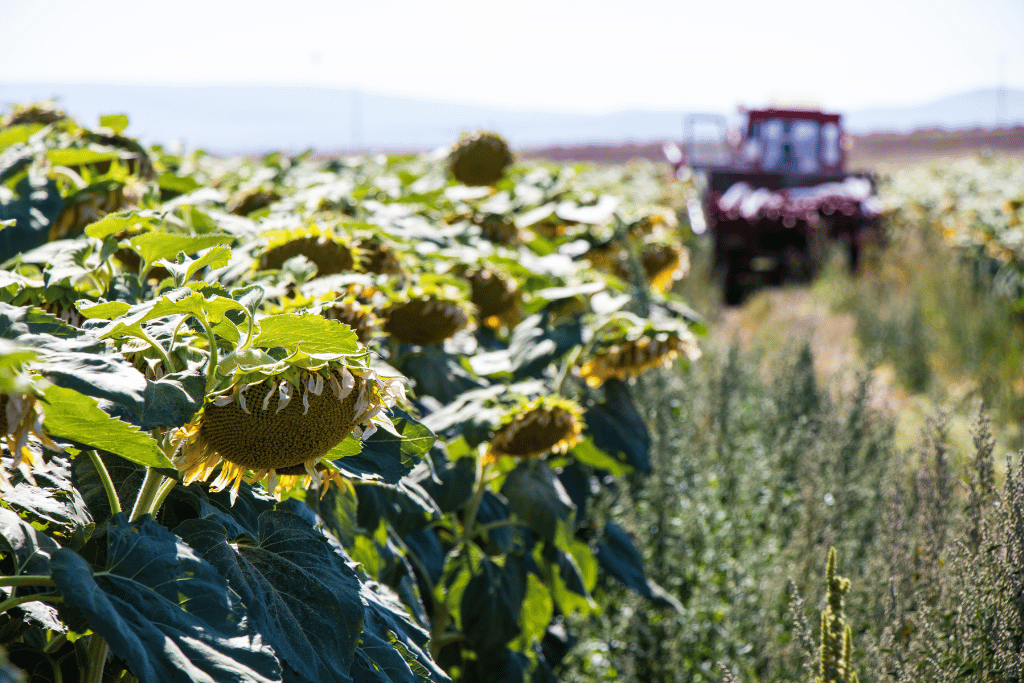
1. Parched Stems and Withering Leaves
A sunflower on its last leg will display a dry, brittle stem and drooping leaves. The reasons behind this are inadequate hydration and the soil’s arid state, which prevents drawing water from the ground.
2. Visible Leaf Drop
When sunflower leaves turn yellow or brown, chances are they are going to detach from the stem, stripping the plant of its lush features. Sunflowers aren’t known for their longevity, with only a few weeks of life to shine bright. Once they’ve bloomed, their time is limited, so hold on to every moment of their beauty.
3. Dark Spots Plague the Leaves
Factors like disease, pests, or even climate change could be the culprits behind dying sunflowers. Keep an eye out for ominous black or brown patches on leaves and intervene as needed. This might include identifying the root cause of the problem, like unsuitable growing conditions, critters, and diseases, or removing the affected leaves.
4. Reduced Number of Flowers
If this once-abundant summer icon begins to decrease flower production, there are a number of prime suspects to consider. One may be a parasite called the sunflower bud moth, which uses the mentioned part of the plant as a nursery for its eggs. The other one is more simple and more unavoidable: climate change. With rising temperatures and erratic weather, sunflowers are fighting to stay afloat, and in some regions, they’ve become a serious challenge to cultivate. This isn’t just about aesthetics; sunflowers are vital to our ecosystem, pollinating other plants and nourishing bees and insects.
Conclusion
Now that you know how long sunflowers bloom, you are free to seize every moment their magical display offers. Keep spreading the cheer these golden gems bring, and let their brightness warm your soul. Have fun maintaining and growing your colorful garden!
Frequently Asked Questions (FAQ)
How long do fresh sunflowers last?
Freshly cut sunflowers can last anywhere from 7 to 10 days, depending on care. To prolong their vibrancy, trim the stems at an angle, remove lower leaves, place them in a clean vase with fresh water, and add flower preservatives. Change water every 2-3 days and avoid direct sunlight or heat sources.
What does a sunflower do at night?
At night, sunflowers typically face east in preparation for the morning sun. This is called heliotropism. However, once the sun sets, they stop moving and remain still until the next morning. During this time, they rest and conserve energy for the following day’s growth and movement towards the sun.
Can sunflowers be in the sun all day?
Sunflowers are well adapted to thrive in full sun, and can tolerate being in its exposure all day, provided they have access to sufficient water. In fact, they require at least six hours of direct sunlight a day to grow and develop properly. However, they may wilt if they don’t receive enough water or if the rays are too intense.


